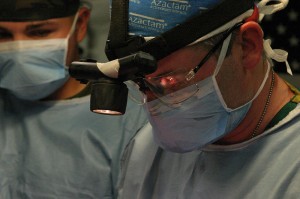 The risk of ischemic stroke increased modestly but significantly following traumatic brain injury (TBI), according to a review of more than 400,000 cases.
The risk of ischemic stroke increased modestly but significantly following traumatic brain injury (TBI), according to a review of more than 400,000 cases.
TBI was associated with a 31% greater risk of stroke compared with trauma patients whose injuries did not affect the brain. A significantly increased risk persisted after adjustment for potentially confounding factors.
Although the absolute increase in risk was 0.2%, the higher prevalence of TBI in trauma patients translated into a bigger contribution to ischemic stroke than hypertension, the leading risk stroke risk factor, James F. Burke, MD, of the University of Michigan in Ann Arbor, and co-authors reported in the July 2 issue of Neurology.
“Despite the robust association of TBI and ischemic stroke, the absolute difference between TBI and non-TBI trauma patients in this low-risk cohort is small,” the authors concluded. “Nonetheless, if further research definitively established TBI as a novel stroke risk factor, this would stimulate research to understand stroke pathophysiology after TBI and inform stroke prevention efforts in this young population with few vascular risk factors.”
The findings add support to a previous Taiwanese study, which showed a higher stroke risk associated with TBI compared with a nontrauma control group.
“In our study, the association persisted after selecting non-TBI trauma controls that are likely more similar to the TBI population than the age- and sex-matched controls in the Taiwanese study,” the authors added.
Stroke and TBI cause substantial disability among working-age adults, as 20% of strokes and more than 40% of TBIs occur in adults younger than 65. A large proportion of strokes in younger people remain unexplained. Identification of risk factors in that subgroup of patients might lead to development of prevention strategies to reduce stroke rates in younger adults, the authors wrote.
In theory, trauma to the head and neck could increase stroke risk by several means, including vascular dissection, microvascular injury, and abnormal coagulation. The Taiwanese observational study showed an association between TBI and all strokes, but the strongest relationship involved known effects of TBI (subarachnoid and intracerebral hemorrhage).
Much of the increased stroke risk occurred in the first month after TBI, suggesting that some events classified as stroke might have been sequelae of TBI.
Burke and colleagues continued the investigation of TBI and stroke by examining data on emergency department visits and inpatient discharges in California from 2005 to 2009. Data for the analysis came from several state and national databases.
Investigators compared TBI and non-TBI trauma patients, adjusting for as many confounders as possible. They defined TBI according to CDC guidelines. They limited the analysis to patients with minor strokes and transient ischemic attacks.
Of 1,173,353 trauma patients, 436,630 (37%) had a TBI. Patients with TBI were slightly younger (mean age 49.2 versus 50.3), were less likely to be women (46.8% versus 49.3%), and had a higher injury severity score (4.6 versus 4.1).
During a median follow-up of 28 months from the traumatic injury, 1% of the patients had newly diagnosed ischemic strokes. The TBI group had an incidence of 1.1% and the non-TBI group an incidence of 0.9%. The fully adjusted analysis showed that TBI was associated with a hazard ratio of 1.31 for ischemic stroke hospitalization as compared with the non-TBI trauma patients (95% CI 1.25-1.36).
The hazard ratio varied minimally with the addition of covariates, including demographics (HR 1.34), comorbidities (HR 1.30), vascular risk factors (HR 1.30), and injury severity and trauma mechanism (HR 1.31).
The magnitude of the association between TBI and ischemic stroke remained similar when stroke hospitalization was categorized by intervals ranging from 7 to 365 days from traumatic injury. An age-stratified analysis resulted in the greatest change, as patients younger than 50 had an odds ratio of 1.56 (95% CI 1.32-1.85) as compared with 1.22 for older patients with TBI (95% CI 1.16-1.28).
The authors acknowledged several limitations of their study, primarily related to the diagnostic imprecision inherent to administrative data.
“TBI is associated with ischemic stroke, and further work is needed to assess whether it may be a novel stroke risk factor,” the authors concluded. “Prospective cohort and/or population-based, cross-sectional studies are needed to confirm the association, explore potential mechanisms for the association between TBI and ischemic stroke, and carefully characterize the clinical features of both TBI and subsequent stroke.”